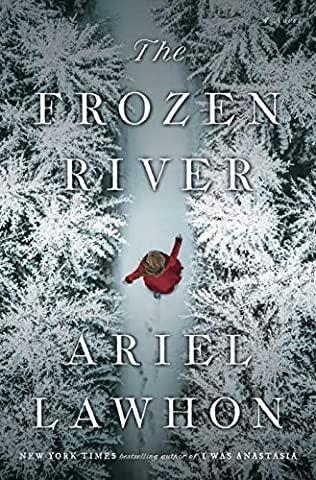I loved Lawhon’s Code Name Helene, so I hoped this book would live up to my expectations – and it did. There were many similarities in the style of writing, though the stories are very different. Both are based closely in historical documents and research, something I love in historical fiction. Both tell a mostly true story about a courageous and talented woman. And both are full of drama without ever feeling unrealistic or melodramatic.

This book takes place in Maine in 1789, although Lawhon goes back about 35 years earlier to tell Martha’s story. As a young woman, Martha marries, bears nine children, learns to read and write (very unusual at that time), and over time she becomes a renowned midwife. The real Martha Ballard kept a detailed diary, which told all the details of the births and other medical issues she addressed, and which also told quite a bit about life of that time. For example, Ballard was required by law to note every woman who bore an illegitimate child and force the woman to identify the father. Then she had to testify to that so those women could be publicly shamed.
Lawhon notes that where her other books are mostly historical fact, here she used the true history of Martha but embellished the stories of many of the other characters. A dead body is found in the frozen Kennebec River but the dead man, Joshua, is also the perpetrator of a horrific rape, so suspicion of the murder (if there was a murder) falls on the rape victim’s husband.
I love a book that combines different elements – this book combines New England post-revolution history, medical history, and legal history. At this time the legal system looks very different — a woman can’t even testify without her husband present. Lawhon introduces so much detail, yet the the story is slow-paced but never dull.
Memory is a wicked thing that warps and twists. But paper and ink receive the truth without emotion, and they read it back without partiality. That, I believe, is why so few women are taught to read and write.
In Code Name Helene, I loved how moving the relationship was between the main character Nancy and her husband. This book was similar. Martha’s husband Ephraim is so thoughtful and caring, I wanted to cry when he teaches her to read. It’s possible he’s not 100% realistic but so much of this story is so dark, and so true, I really needed the love those two shared. I have to think Lawhon herself is in a deeply loving relationship, because in both of these books the relationships aren’t just about passion, but also deep understanding and respect.
I also loved how descriptive the writing was – during this long, cold winter I really felt like I was there, as Lawhon describes every aspect of 18th century life, even candle-making. This book has a LOT of characters, between Martha’s children and the townspeople she cares for, but I didn’t have a hard time keeping track of who was who. That says a lot about Lawhon’s writing. There’s also a lot of movement between Martha’s past and present, but it all worked.
This book won’t be for everyone, but if you love historical fiction and learning about very strong women, I can’t recommend this book enough. You can find more books that blend history and fiction here.

